Citizen Action

What are some examples of successful citizen-led climate initiatives ?
Successful citizen-led climate initiatives play a crucial role in addressing the global climate crisis. These initiatives are often driven by grassroots movements, community organizations, and individuals who are committed to taking action against climate change. Examples of successful citizen-led climate initiatives include renewable energy cooperatives, community gardens and urban farming projects, bike share programs, climate education and advocacy efforts, and waste reduction and recycling programs. These initiatives highlight the importance of collective action and individual responsibility in creating a more sustainable future for all.

How will the concept of citizen engagement change in future cities ?
This essay explores the future of citizen engagement in cities, influenced by technological advancements like AI and IoT, social media platforms, and demographic changes. Potential changes include increased participation through virtual town halls and online voting systems, greater transparency via open data and public dashboards, and more collaborative approaches such as co-creation workshops and community-led projects. The essay emphasizes the importance of adapting strategies for engaging with citizens to ensure vibrant, inclusive, and sustainable urban communities.

How can citizen science contribute to biodiversity research and conservation ?
This article explores the role of citizen science in enhancing biodiversity research and conservation efforts. It highlights how involving the general public in scientific projects can boost data collection, raise environmental awareness, and support conservation initiatives. The article also provides examples of successful citizen science projects that have contributed significantly to understanding and protecting biodiversity.
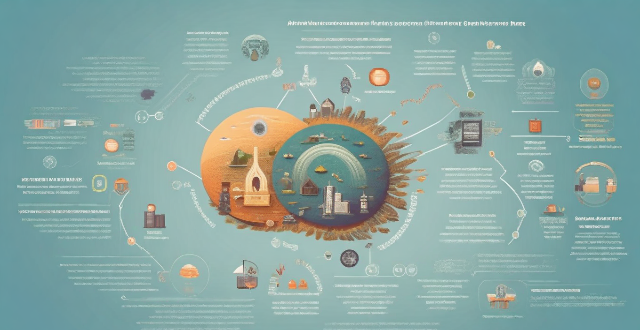
What role do education and awareness play in promoting citizen action on climate change ?
Education and awareness are crucial for promoting citizen action on climate change. They help individuals understand the science, develop skills, foster critical thinking, raise consciousness, mobilize public support, and promote behavioral change. Strategies for enhancing education and awareness include integrating climate change into curricula, community workshops, media campaigns, and partnerships with NGOs and corporations. Investing in education and awareness is essential for creating a more resilient and equitable future.
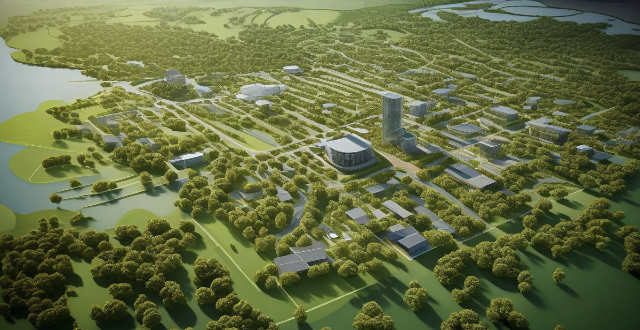
How can we encourage individuals and communities to take action on climate change adaptation ?
Encouraging individuals and communities to take action on climate change adaptation requires a multi-faceted approach that includes education, policy changes, economic incentives, community engagement, and technological innovation. This involves raising public awareness through workshops, media campaigns, and integrating climate change topics into educational curricula. Developing and implementing adaptation policies at local and national levels is crucial, along with promoting green infrastructure and sustainable practices. Offering financial incentives such as tax breaks and grants can encourage the adoption of energy-efficient technologies and eco-friendly products. Support for community-based projects is also essential, including funding for initiatives and capacity building. Fostering community leadership and encouraging civic participation through volunteer programs and town hall meetings can further inspire collective action. Promoting research and development, adopting advanced technologies, and using renewable energy sources are also vital components in this comprehensive approach. By working together, we can build a more resilient future for all.

How can cities encourage citizen participation in greening projects ?
This article discusses various strategies that cities can adopt to encourage citizen participation in greening projects, including education and awareness, volunteer opportunities, incentives and recognition, and collaboration with local organizations. By implementing these strategies, cities can create vibrant, sustainable environments that benefit both residents and the planet.
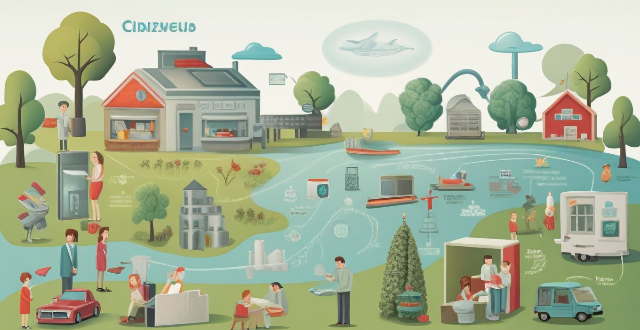
How can citizens participate in environmental monitoring initiatives ?
The text provides a detailed guide on how citizens can actively participate in environmental monitoring initiatives. It suggests joining local conservation groups, volunteering for citizen science projects, utilizing technology, educating and spreading awareness, advocating for policy changes, and collaborating with universities and research institutions as effective ways to contribute. These activities not only aid scientific research but also promote community involvement and responsibility towards the environment.

How can young people get involved in climate action ?
Young people can get involved in climate action by educating themselves, joining youth organizations, advocating for change, taking local action, volunteering, and supporting sustainable businesses.

What role do governments play in implementing climate action plans ?
Governments play a crucial role in implementing climate action plans by setting targets, enacting legislation, providing incentives, investing in research and development, regulating industries, raising public awareness, developing infrastructure, supporting innovation, and engaging in international diplomacy. These actions help reduce greenhouse gas emissions, promote sustainable development, and build resilience against the impacts of climate change.

What role do citizens play in shaping environmental legislation ?
The text discusses the significant role that citizens play in shaping environmental legislation. It outlines various ways in which they can influence such legislation, including advocacy and public awareness, voting and elections, lobbying and policy influence, litigation and legal action, and grassroots movements and direct action. The text emphasizes that by working together, citizens can help create a more sustainable future for themselves and future generations.

How can individuals contribute to climate action advocacy ?
Individuals can contribute to climate action advocacy by engaging in educational and awareness-raising activities, making lifestyle changes to reduce their carbon footprint, participating in community initiatives, providing financial support to environmental organizations, and engaging in advocacy and activism. These actions help promote policies and practices that mitigate climate change and adapt to its impacts, ultimately fostering a culture of sustainability.

What are the benefits of taking climate action ?
Taking climate action is crucial for the survival and well-being of our planet and its inhabitants. Here are some of the benefits that come with taking climate action: 1. Health Benefits: - Improved Air Quality: Reducing greenhouse gas emissions can help improve air quality, leading to fewer respiratory problems and a lower risk of lung cancer. - Reduced Heat-Related Illnesses: Taking steps to mitigate climate change can help reduce the frequency and intensity of heatwaves, which in turn reduces the risk of heat-related illnesses like dehydration and heat exhaustion. 2. Economic Benefits: - Job Creation: Investing in renewable energy sources like wind and solar power creates jobs in manufacturing, installation, and maintenance. - Cost Savings: By reducing our dependence on fossil fuels, we can save money on energy bills and reduce the economic impact of fluctuating oil prices. 3. Environmental Benefits: - Biodiversity Preservation: Taking climate action helps protect habitats and ecosystems, preserving biodiversity and preventing species extinction. - Water Conservation: Mitigating climate change can help preserve water resources by reducing the severity and frequency of droughts. 4. Social Benefits: - Community Resilience: Taking climate action can help build more resilient communities by preparing for and adapting to the impacts of climate change. - Public Awareness: Climate action raises public awareness about environmental issues, promoting a culture of sustainability and encouraging individuals to make eco-friendly choices in their daily lives. In conclusion, taking climate action offers numerous benefits that extend beyond just protecting the environment. It's essential for our health, economy, and social well-being. By working together to reduce greenhouse gas emissions and adapt to the changing climate, we can create a more sustainable and resilient future for all.

How can we ensure that climate action is consistent with human rights ?
To ensure that climate action is consistent with human rights, we need to adopt a holistic approach that takes into account the social, economic, and environmental dimensions of sustainability. Some strategies include recognizing the interdependence between climate action and human rights, integrating human rights into climate policy, ensuring transparency and accountability, promoting participatory democracy, strengthening legal frameworks, and building capacity and providing support to vulnerable populations. By doing so, we can create a more equitable and just world for all.
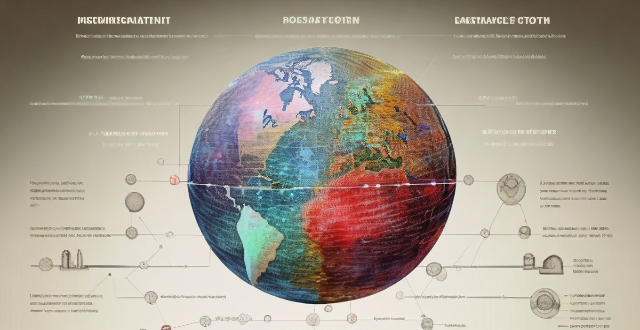
What are some successful examples of youth-led climate action initiatives ?
This article discusses successful youth-led climate action initiatives around the globe, highlighting examples like Fridays for Future, US Youth Climate Strike, and Earth Uprising. These movements have achieved significant milestones in raising awareness, inspiring policy changes, and fostering collective action towards addressing climate change.
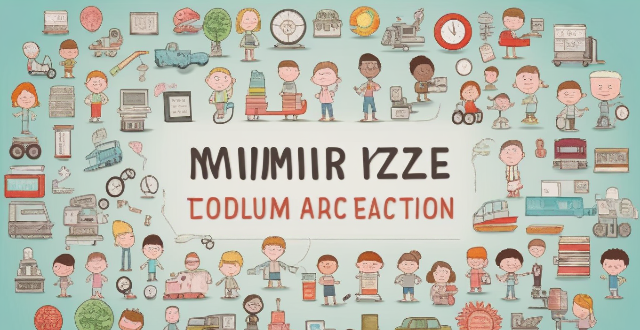
What challenges do young people face when trying to participate in climate action ?
The text summarizes the challenges faced by young people in climate action. These include a lack of awareness and education, limited resources and opportunities, social and political barriers, emotional and psychological challenges, and practical difficulties. Despite these obstacles, it is crucial for young individuals to engage in climate action to create positive changes and contribute to a more sustainable future.

How do people's attitudes towards climate change affect their willingness to take action on environmental issues ?
The text discusses how attitudes towards climate change influence environmental action. It identifies factors like awareness, emotional connection, responsibility, barriers, and incentives that shape willingness to act on environmental issues.

How can we ensure that climate action initiatives are equitable and just ?
To ensure that climate action initiatives are equitable and just, it is important to prioritize vulnerable communities, promote participatory decision-making, address historical responsibility, ensure transparency and accountability, and foster multi-stakeholder collaboration. This approach can help create a more resilient world where everyone has the opportunity to thrive despite the challenges posed by climate change.

How can businesses be encouraged to take climate action ?
Climate change is a global challenge that requires collective action from businesses. Government regulations and incentives, public pressure, long-term financial benefits, collaboration with other businesses, and education and awareness campaigns are some ways to encourage businesses to take climate action. By taking action, businesses can reduce their environmental impact, save money on utility bills and disposal costs, and benefit from stable sources of renewable energy.

How can we ensure that climate action benefits both men and women equally ?
Ensuring gender equality in climate action is crucial for addressing the differential impacts of climate change on men and women. To achieve this, we must recognize gender-specific impacts, encourage gender equality in policy making, integrate gender perspectives in adaptation and mitigation measures, enhance access to resources and services, support capacity building and empowerment, address cultural and social norms, and monitor progress to adjust strategies accordingly. By doing so, we can promote a more equitable future where climate action benefits both genders equally.

How can social media be used to mobilize young people for climate action ?
The text discusses how social media can be utilized to engage and mobilize young people for climate action. It outlines strategies for raising awareness, fostering dialogue, and driving concrete actions through educational content, influencer partnerships, hashtag campaigns, discussion forums, interactive polls and surveys, user-generated content, volunteer opportunities, online activism, and practical tips for sustainable living. The conclusion emphasizes the potential of social media as a tool for social change and calls for its wise use to shape a brighter future.
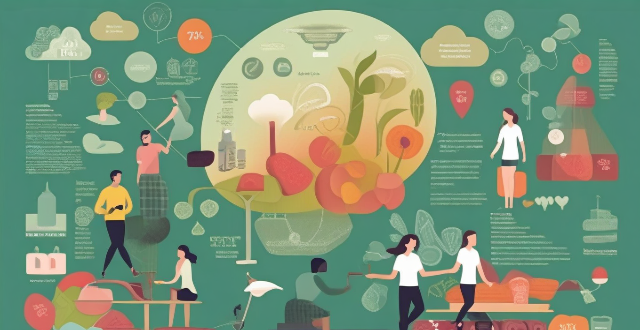
What is the relationship between climate action and sustainable development ?
Climate action and sustainable development are interconnected concepts that aim to create a healthier, more equitable, and prosperous world. They have mutual benefits, as taking action to address climate change can also promote sustainable development. An integrated approach that combines both concepts can lead to better outcomes, considering environmental, social, and economic aspects. Both require a long-term perspective, planning for the future while addressing immediate needs. Recognizing the importance of both concepts and working towards their integration is essential to create a more resilient and adaptable society.
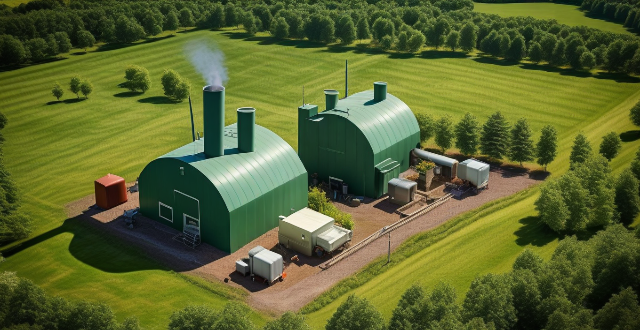
What is the impact of climate action on biodiversity and ecosystems ?
Climate action has both positive and negative impacts on biodiversity and ecosystems. Positive effects include reduction in greenhouse gas emissions, increased awareness and education, protection of key habitats, promotion of sustainable practices, and restoration of degraded ecosystems. Negative effects include displacement of local communities, habitat loss and fragmentation, ecosystem disruption, resource competition, and uncertain long-term outcomes. To maximize the benefits of climate action for biodiversity and ecosystems, an integrated approach that considers both environmental and social factors is crucial.

What challenges do filmmakers face when creating realistic sports action scenes ?
Creating realistic sports action scenes in films is a challenging task for filmmakers. They need to capture the essence of the sport while maintaining authenticity and excitement for viewers. The challenges they face include achieving accurate representation, capturing high-energy action, maintaining audience interest, enhancing visual effects, and adapting to different sports genres. By successfully overcoming these obstacles, filmmakers can deliver captivating sequences that capture the spirit of sports and leave audiences on the edge of their seats.

How can young people balance their education and involvement in climate action ?
Balancing education and involvement in climate action is crucial for young people. Effective strategies include time management, goal setting, and seeking support from peers and mentors. By prioritizing tasks, breaking down goals into smaller steps, and celebrating milestones, young people can achieve a balance between their education and involvement in climate action initiatives. Joining a community of like-minded individuals, finding a mentor, and collaborating with peers can also provide valuable support and opportunities for growth. With these strategies, young people can make a positive impact on the environment while achieving their educational goals.

How can we involve vulnerable communities in climate action planning and implementation ?
Involving vulnerable communities in climate action planning and implementation is crucial for creating effective, equitable, and sustainable solutions to the climate crisis. Here's how we can ensure their involvement: 1. Identify and engage with vulnerable communities through community meetings, workshops, and consultations. 2. Build trust and capacity within these communities by involving them in decision-making processes, providing regular updates on progress, demonstrating transparency and accountability, and offering training programs on climate change science, policy advocacy, and project management skills. 3. Collaborate with vulnerable communities to develop solutions that address their specific needs and priorities while being culturally sensitive and respectful of local traditions and practices. 4. Regularly monitor progress towards climate action goals and evaluate the impact of initiatives on vulnerable communities by collecting data on changes in environmental conditions, economic opportunities, and social wellbeing, as well as seeking feedback from community members.

What initiatives are being taken globally to include children in climate action planning ?
Including children in climate action planning is crucial for several reasons. Firstly, it acknowledges their rights and provides them with a platform to voice their concerns about the environment. Secondly, it encourages intergenerational dialogue and collaboration, which can lead to more effective solutions. Finally, involving children in climate action planning helps them develop critical thinking skills, empathy, and a sense of responsibility towards the planet. Here are some initiatives that are being taken globally to include children in climate action planning: 1. UNICEF's Child-Friendly Cities Initiative 2. The Global Kids Climate Forum 3. The Youth4Climate Movement 4. The Fridays for Future Movement 5. The Climate Change Education Programme (CCEP) 6. The Earth Guardians Programme 7. The Eco-Schools Programme 8. The Children's Climate Prize 9. The Global Youth Biodiversity Network (GYBN) 10. The Youth Environmental Leadership Programme (YELP)
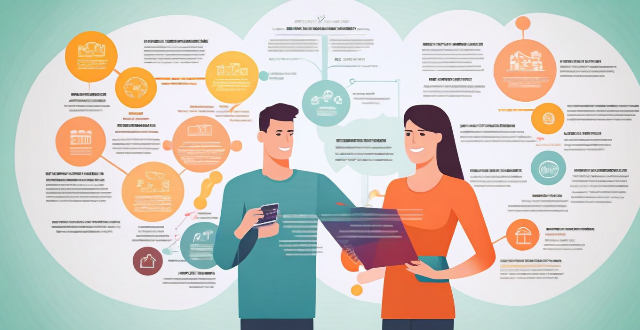
How can education and awareness-raising help promote both climate action and the SDGs ?
Education and awareness play a crucial role in promoting climate action and achieving the Sustainable Development Goals (SDGs). By providing individuals with knowledge and understanding of complex environmental issues, we can empower them to make informed decisions and take action towards a more sustainable future. Educational programs can promote environmental literacy, encourage active engagement, and build capacity for innovation that supports both climate action and the achievement of the SDGs. Strategies for promoting climate action and the SDGs through education and awareness include integrating sustainability into curricula, promoting interdisciplinary collaboration, partnering with community organizations, and utilizing technology and social media.

Can carbon offsetting be used as a substitute for government action on climate change ?
The article discusses the concept of carbon offsetting and its potential as a substitute for government action on climate change. Carbon offsetting involves investing in projects that reduce or remove greenhouse gases from the atmosphere, such as renewable energy sources and reforestation. While it has advantages like individual responsibility and immediate impact, it also has limitations like not being a complete solution and lack of regulation. Government action is crucial in addressing climate change through regulation, infrastructure, and education. The conclusion states that carbon offsetting can be a useful tool, but it cannot replace government action.

How can small and medium-sized enterprises (SMEs) integrate climate action into their CSR without significant financial burdens ?
This guide explores strategies for Small and Medium-sized Enterprises (SMEs) to integrate climate action into their Corporate Social Responsibility (CSR) without significant financial burdens. It emphasizes the importance of understanding the environmental impact, regulatory compliance, consumer expectations, and potential cost savings associated with climate action in CSR. The strategies include energy efficiency measures, waste reduction and recycling, green procurement, employee engagement and education, community involvement and partnerships, and reporting and continuous improvement. These actions can lead to cost savings, enhanced reputation, and a culture of sustainability within the company.

How has climate action evolved over the past decade, and what progress has been made ?
Over the past decade, significant strides have been made in the realm of climate action. This evolution is characterized by increased awareness, global mobilization, technological advancements, and policy changes aimed at mitigating the effects of climate change. Key aspects of this progress include: 1. **Increased Awareness and Global Mobilization**: Public awareness about climate change has grown substantially, thanks to educational initiatives, media campaigns, youth-led movements like Fridays for Future, and UNFCCC COP conferences. 2. **Technological Advancements**: Remarkable progress in renewable energy technologies, electric vehicles, energy efficiency, and carbon capture has been made. 3. **Policy Changes and Legal Frameworks**: Many countries have implemented policies to reduce greenhouse gas emissions and promote clean energy. The Paris Agreement set a global framework for combating climate change. 4. **Financial Investments and Market Mechanisms**: Green finance, carbon pricing, and investment in sustainable infrastructure are on the rise. 5. **Corporate Responsibility and Innovation**: Corporations are setting sustainability goals, managing their supply chains more sustainably, and consumers are choosing environmentally responsible products. 6. **Civil Society and Community Action**: Grassroots organizations lead community-based actions, local communities establish renewable projects, and NGOs advocate for stronger climate policies. 7. **Research and Collaboration**: Ongoing scientific research, international platforms, and open data initiatives foster collaboration and better understanding of climate solutions. 8. **Challenges and Setbacks**: Despite advancements, challenges remain, including political will, economic barriers, inequity, and loss and damage from climate change. In conclusion, while notable progress has been made in climate action over the past decade, continued efforts across all sectors will be required to meet ambitious goals and limit climate change impacts.